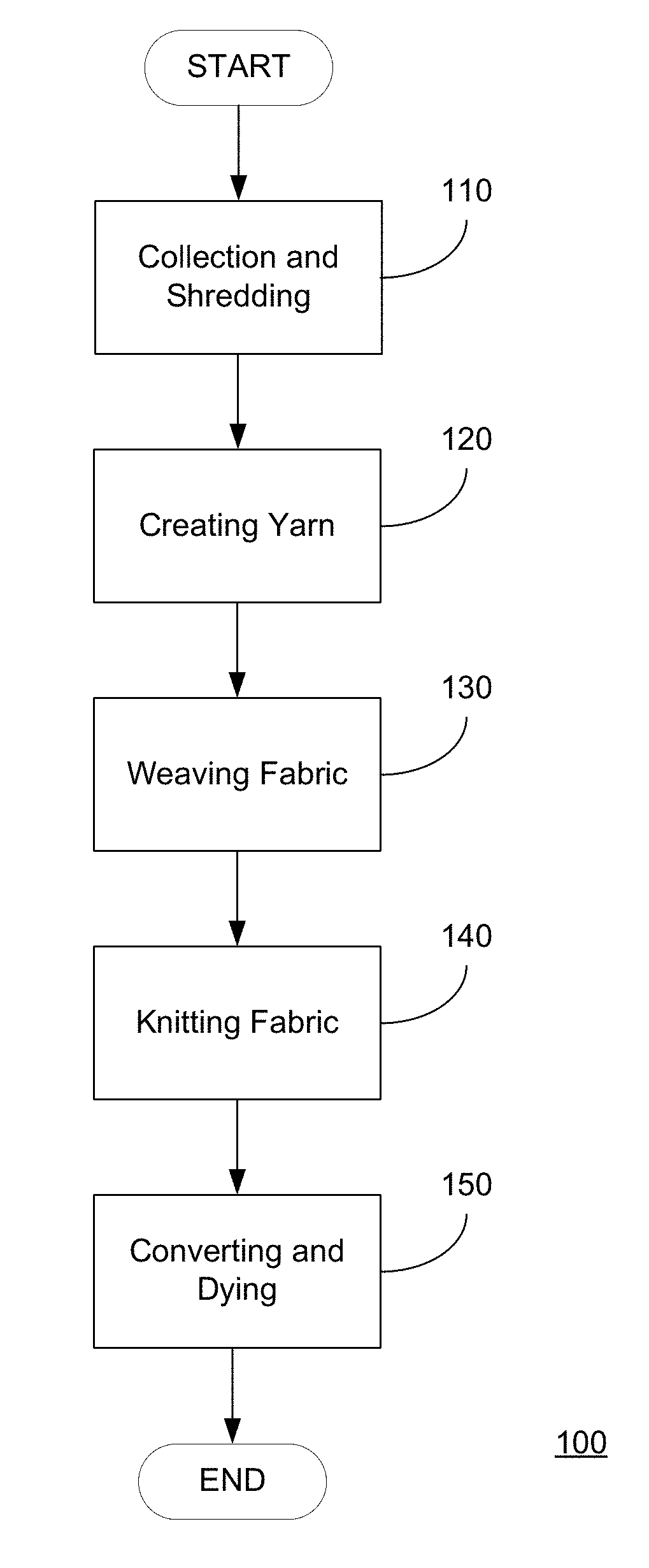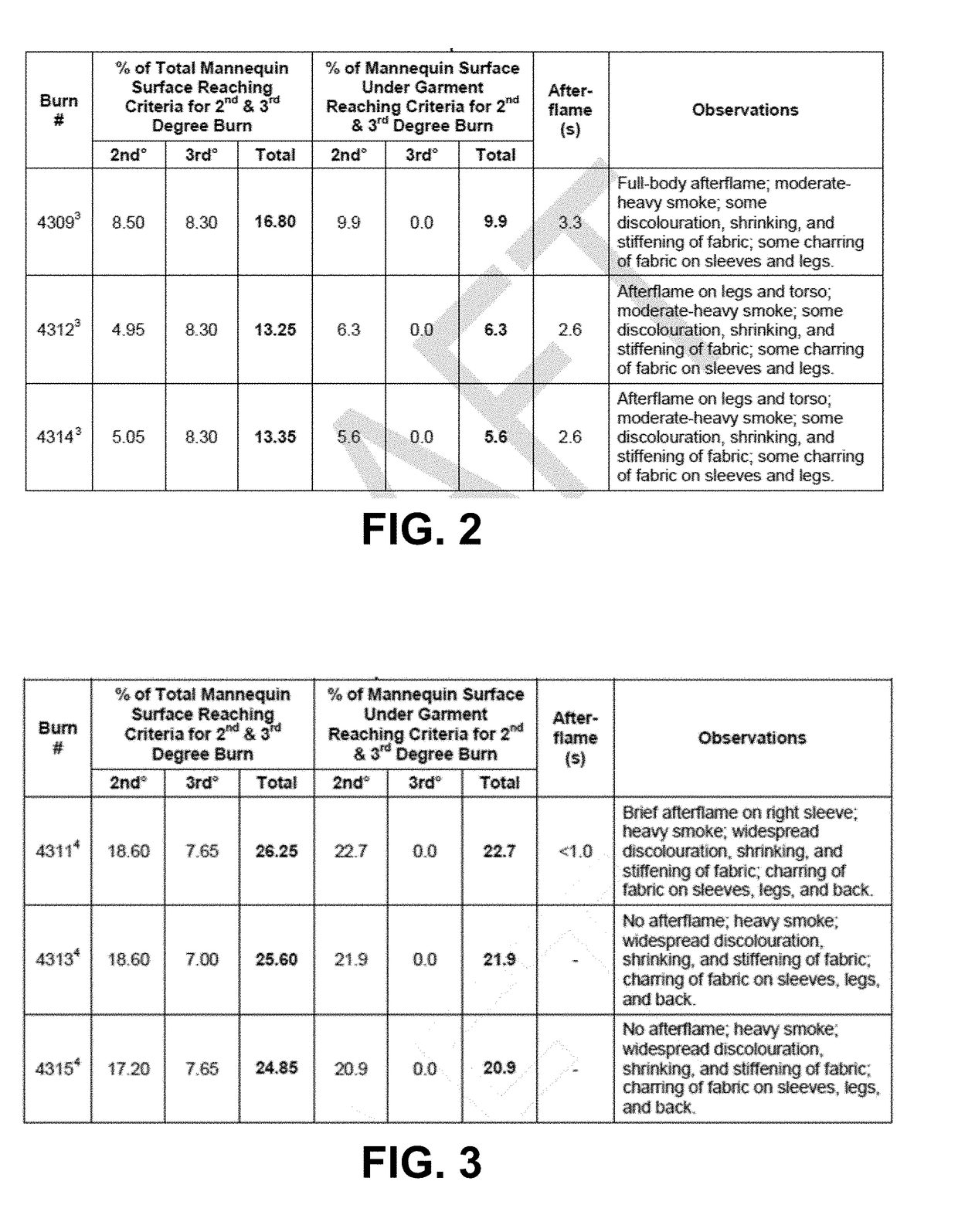Protective Fabric and Process of Manufacturing Same
- Summary
- Abstract
- Description
- Claims
- Application Information
AI Technical Summary
Benefits of technology
Problems solved by technology
Method used
Image
Examples
Embodiment Construction
[0031]A process 100 for producing a fire resistant fabric is shown at a high level in FIG. 1. The process begins with the collection and shredding 110 of used garments such as coveralls. The garments may initially have contaminants such as oil, dirt, etc. present thereon. These contaminants may be removed through dry cleaning using a chemical solvent such as tetrachloroethylene (perchloroethylene) commonly known as “PERC”. The garments may then be processed by manually removing any non-fire resistant components such as zippers, snaps, hook and loop fasteners (e.g. Velcro®), etc. After removal of these non-fire resistant components, the garments are shredded by means of an industrial fabric shredder to produce recycled fibers.
[0032]At step 120, the recycled fibers are used to make yarn through carding by hundreds of fine wires in a carding machine, as is known in the art. The carding machine separates the fibers and produces a rope like strand of parallel fibers called a sliver. The ...
PUM
| Property | Measurement | Unit |
|---|---|---|
| Weight | aaaaa | aaaaa |
| Percent by mass | aaaaa | aaaaa |
| Percent by mass | aaaaa | aaaaa |
Abstract
Description
Claims
Application Information
 Login to View More
Login to View More - R&D
- Intellectual Property
- Life Sciences
- Materials
- Tech Scout
- Unparalleled Data Quality
- Higher Quality Content
- 60% Fewer Hallucinations
Browse by: Latest US Patents, China's latest patents, Technical Efficacy Thesaurus, Application Domain, Technology Topic, Popular Technical Reports.
© 2025 PatSnap. All rights reserved.Legal|Privacy policy|Modern Slavery Act Transparency Statement|Sitemap|About US| Contact US: help@patsnap.com



